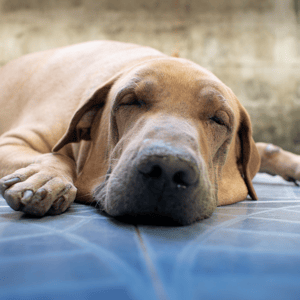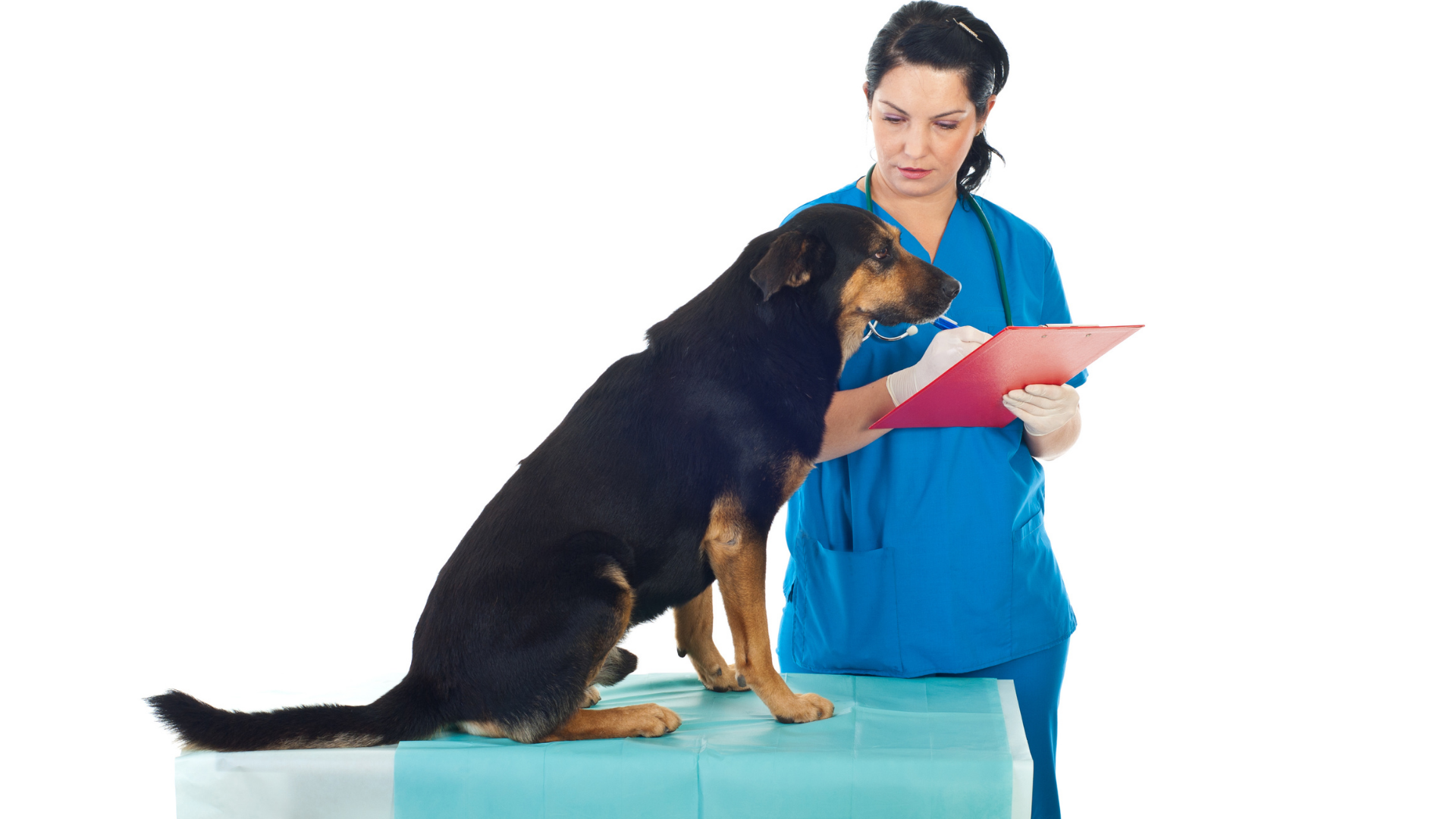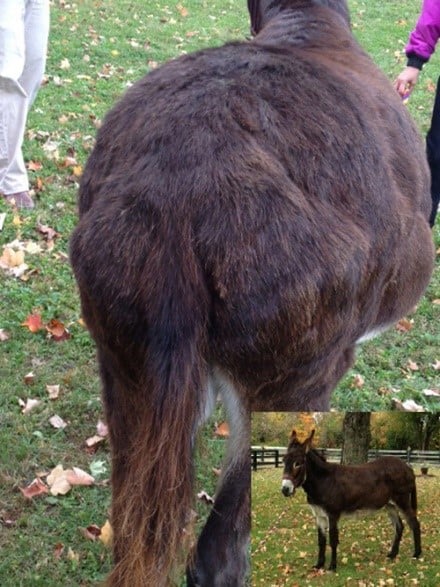January is National Thyroid Awareness Month, and a good time to learn more about hypothyroidism, a thyroid disorder affecting many dogs that can impact their overall health and skin health in particular…
The thyroid gland plays an essential role in your pet’s wellbeing, as well as the health of their skin and coat. As part of the endocrine system, the thyroid glands work closely with the nervous system to help regulate normal, healthy body functions and controls metabolism and energy consumption through the secretions of thyroid hormones. The inability to sufficiently produce these hormones can result in hypothyroidism, a condition that can disrupt these normal body processes and can significantly impact your pet’s quality of life.
Most cases of hypothyroidism develop in pets between 2 to 9 years of age. An increased frequency of the condition has been noted in certain breeds, such as Golden Retrievers, Doberman Pinschers, Labrador Retrievers, Cocker Spaniels, Shar-peis, and English Bulldogs (as well as many others). Naturally occurring hypothyroidism is rare in cats.
 Common signs that your pet may have an underperforming thyroid may include:
Common signs that your pet may have an underperforming thyroid may include:
- Weight gain, obesity
- Decreased appetite
- Lethargy, low energy levels
- Depression
- Thermophilia (need for warmth)
When it comes to your pet’s skin and hair coat, hypothyroidism symptoms may take the form of:
- Alopecia (hair loss, slowing/stopping of the hair growth cycle)
- Dull hair coat
- Lightening of the coat
- Scaling
- Recurrent skin and ear infections
One of the tools veterinarians use to confirm a diagnosis of hypothyroidism is the measurement of various thyroid hormones in your pet’s bloodstream. Although hypothyroidism is not an uncommon hormonal condition in dogs, the diagnosis can be tricky as other internal and external factors can affect the body’s production of thyroid hormones. Some health conditions (such as Cushing’s disease, diabetes, etc.), certain drugs and drug groups, time of day, breed, body weight, age or reproductive status can influence blood levels of thyroid hormones. But with a thorough medical history and diagnostic testing, your veterinarian can usually obtain a diagnosis of hypothyroidism in your dog.
 Fortunately, once hypothyroidism is identified as affecting your pet, the condition has an excellent prognosis with treatment. Supplementation with levothyroxine, a synthetic drug of the hormone the thyroid produces naturally, is recommended, coupled with careful monitoring by your veterinarian to achieve the optimal blood levels in the pet. Once thyroid hormone levels return to normal, usually within 4 to 6 weeks, the symptoms begin to abate. Increased energy level is one of the first signs to improve, followed by weight loss. Your pet’s hair loss can take time to recover since the hair cycle stops with hypothyroidism. In fact, your dog may initially loose more hair as the hair cycle restarts and the new hairs push the old hair shafts out of the hair follicle.
Fortunately, once hypothyroidism is identified as affecting your pet, the condition has an excellent prognosis with treatment. Supplementation with levothyroxine, a synthetic drug of the hormone the thyroid produces naturally, is recommended, coupled with careful monitoring by your veterinarian to achieve the optimal blood levels in the pet. Once thyroid hormone levels return to normal, usually within 4 to 6 weeks, the symptoms begin to abate. Increased energy level is one of the first signs to improve, followed by weight loss. Your pet’s hair loss can take time to recover since the hair cycle stops with hypothyroidism. In fact, your dog may initially loose more hair as the hair cycle restarts and the new hairs push the old hair shafts out of the hair follicle.
While hypothyroidism requires lifelong management with levothyroxine supplementation and periodic monitoring of thyroid hormone blood values by your veterinarian, with treatment your pet can return to their healthy, happy and active lives.
If you think you pet may be suffering from hypothyroidism, contact your veterinarian, or your local Animal Dermatology Clinic.




 Common signs that your pet may have an underperforming thyroid may include:
Common signs that your pet may have an underperforming thyroid may include: Fortunately, once hypothyroidism is identified as affecting your pet, the condition has an excellent prognosis with treatment. Supplementation with levothyroxine, a synthetic drug of the hormone the thyroid produces naturally, is recommended, coupled with careful monitoring by your veterinarian to achieve the optimal blood levels in the pet. Once thyroid hormone levels return to normal, usually within 4 to 6 weeks, the symptoms begin to abate. Increased energy level is one of the first signs to improve, followed by weight loss. Your pet’s hair loss can take time to recover since the hair cycle stops with hypothyroidism. In fact, your dog may initially loose more hair as the hair cycle restarts and the new hairs push the old hair shafts out of the hair follicle.
Fortunately, once hypothyroidism is identified as affecting your pet, the condition has an excellent prognosis with treatment. Supplementation with levothyroxine, a synthetic drug of the hormone the thyroid produces naturally, is recommended, coupled with careful monitoring by your veterinarian to achieve the optimal blood levels in the pet. Once thyroid hormone levels return to normal, usually within 4 to 6 weeks, the symptoms begin to abate. Increased energy level is one of the first signs to improve, followed by weight loss. Your pet’s hair loss can take time to recover since the hair cycle stops with hypothyroidism. In fact, your dog may initially loose more hair as the hair cycle restarts and the new hairs push the old hair shafts out of the hair follicle.

